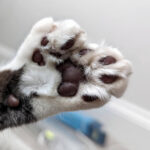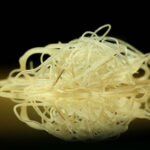The Combat Application Tourniquet (CAT), often referred to as a Cat Tourniquet, stands as a pivotal invention in modern military and civilian emergency medicine. Since its introduction to the U.S. Army in 2005, this one-handed tourniquet has been instrumental in dramatically reducing mortality rates from extremity bleeding, credited with an impressive 85% decrease. The U.S. Army Institute of Research, following rigorous evaluation, affirmed its effectiveness as 100% in occluding blood flow. This makes the cat tourniquet a critical tool in any first aid kit or emergency response scenario.
The latest iteration, the CAT GEN7, represents a significant evolution based on extensive field feedback. Redesigned for enhanced usability and effectiveness, the GEN7 simplifies application with a single routing buckle, a streamlined protocol, and improved component construction. Its proven 100% effectiveness in halting blood flow in both upper and lower limbs, as validated by the U.S. Army’s Institute of Surgical Research, underscores why the cat tourniquet is the gold standard in prehospital trauma care.
The reliability and ease of use of the cat tourniquet are paramount in high-stress situations. Its design allows for rapid, one-handed application, crucial when self-aid or buddy-aid is necessary under duress. Whether for military personnel, law enforcement, first responders, or civilians preparing for emergencies, understanding how to use a cat tourniquet can be life-saving.
Key Enhancements of the CAT GEN7 Tourniquet
The CAT GEN7 cat tourniquet incorporates several key improvements designed to enhance its performance and ease of use in critical situations:
- Single Routing Buckle: This innovative design facilitates faster application, minimizes blood loss, ensures effective slack removal, reduces the required windlass turns, and simplifies training across the board with standardized single-protocol application.
- Reinforced Windlass Rod: Featuring an increased diameter, the windlass rod now boasts enhanced strength and aggressive ribbing, providing a superior grip for reliable operation.
- Bilateral Windlass Clip & Buttress: The bilateral windlass clip enables rapid windlass locking, while the bilateral buttress adds structural strength to withstand extreme forces during application.
- Enhanced Windlass Strap: Now in tactical gray and sonically welded to the clip, this strap maintains constant contact, ensuring secure windlass retention. It also provides a dedicated space to document the application time, a crucial detail for medical personnel.
- Reinforced Stabilization Plate: The stabilization plate is strengthened with a beveled contact bar, optimizing pressure distribution and patient comfort during application.
- Red Tip Technology®: The signature red elliptical tip serves as a clear visual cue during application, especially in low-light conditions, helping to prevent mistakes under stress.
- Patented Free-Moving Internal Band: This internal band is designed to deliver truly even, circumferential pressure, maximizing effectiveness in occluding blood flow and minimizing potential tissue damage.
Core Features of the CAT Tourniquet
The cat tourniquet has garnered significant recognition and adoption due to its proven performance and user-friendly design:
- U.S. Army Top 10 Invention: Recognized for its groundbreaking impact on battlefield casualty care.
- Official U.S. Army Tourniquet: The standard-issue tourniquet for the U.S. Army, reflecting its trusted reliability.
- Universal Military Application: Utilized by both conventional and Special Operations forces across the U.S. military.
- 100% Effective Blood Flow Occlusion: Scientifically validated by the U.S. Army’s Institute of Surgical Research to completely stop blood flow in limbs.
- True One-Handed Application: Designed for self-application or application on another person with only one hand, essential in combat or emergency scenarios.
- Rapid Bleeding Control: Quickly halts life-threatening extremity bleeding, giving crucial time for further medical intervention.
- Tactical Combat Casualty Care Recommendation: Endorsed by the Committee on Tactical Combat Casualty Care, a leading authority in military medical guidelines.
- All-Weather Performance: Engineered to function reliably in diverse and challenging environmental conditions.
- Compact and Cost-Effective: Small size allows for easy carry in kits, and its cost-effectiveness makes it accessible for widespread distribution.
- Patented Technology: Protected by U.S. Patent Nos. 7,842,067 and 7,892,253, ensuring its unique design and functionality.
Step-by-Step Guide: Applying the CAT Tourniquet
Proper application of a cat tourniquet is critical for its effectiveness. Follow these steps carefully in an emergency situation:
- Positioning: Place the injured limb through the loop of the cat tourniquet.
- Location: Position the cat tourniquet 2-3 inches above the bleeding site. Apply directly to the skin if possible to avoid slippage.
- Initial Tightening: Pull the self-adhering band to tighten it firmly. Secure the band with Velcro, going up to but not over the windlass clip. The band should be tight enough that you cannot easily slide more than three fingers underneath.
- Windlass Activation: Twist the windlass rod until the bleeding completely stops. This may require several rotations.
- Windlass Security: Secure the windlass rod inside the windlass clip to maintain tension.
- Bleeding Confirmation: Double-check to ensure that the bleeding has ceased. If bleeding continues, consider applying a second cat tourniquet just above the first.
- Strap Wrapping: Wrap the remaining tail of the Velcro strap over the windlass rod, under the windlass clip, and then around the limb to further secure the rod and maintain pressure.
- Retention Strap Fastening: Secure the windlass retention strap over the top of the clip to ensure the windlass remains locked during transport or movement.
- Time Recording: Use a marker or pen to record the application time directly on the retention strap. This information is vital for medical professionals upon arrival.
In conclusion, the cat tourniquet is more than just a medical device; it’s a proven life-saving tool. Its continuous evolution, culminating in the GEN7, reflects a commitment to performance and ease of use. Understanding its features and proper application is essential for anyone concerned with emergency preparedness and bleeding control. Whether for professional use or personal safety, the cat tourniquet remains an indispensable component of any comprehensive first aid strategy.


